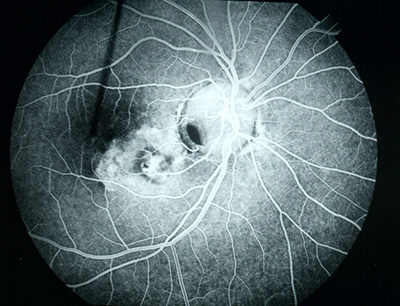Central Retinal Vein Occlusion (CRVO)
You probably know that high blood pressure and other vascular diseases pose risks to overall health, but you may not know that they can affect eyesight by damaging the veins in the eye.
Central retinal vein occlusion (CRVO) blocks the main vein in the retina, the light-sensitive nerve layer at the back of the eye. The blockage causes the walls of the vein to leak blood and excess fluid into the retina. When this fluid collects in the macula-the area of the retina responsible for central vision-vision becomes blurry.
Floaters in your vision are another symptom of CRVO. When retinal blood vessels are not working properly, the retina grows new fragile vessels that leak blood into the vitreous, the fluid that fills the center of the eye. Blood in the vitreous clumps and is seen as tiny dark spots, or floaters, in the field of vision.
In severe cases of CRVO, the blocked vein causes painful pressure in the eye. Retinal vein occlusions commonly occur with glaucoma, diabetes, age-related vascular disease, high blood pressure, and blood disorders.
The first step is finding what is causing the vein blockage. There is no cure for CRVO. Your ophthalmologist may recommend a period of observation, since hemorrhages and excess fluid often subside on their own. Depending on how damaged the veins are, laser surgery or injection of medication in the eye may help reduce the swelling and improve vision.
These treatments work by shrinking the abnormal new blood vessels that are at risk of bleeding. Long term follow-up is required when this condition occurs, to monitor for late complications such as a high pressure in the eye.

Central retinal vein occlusion of the right eye.
